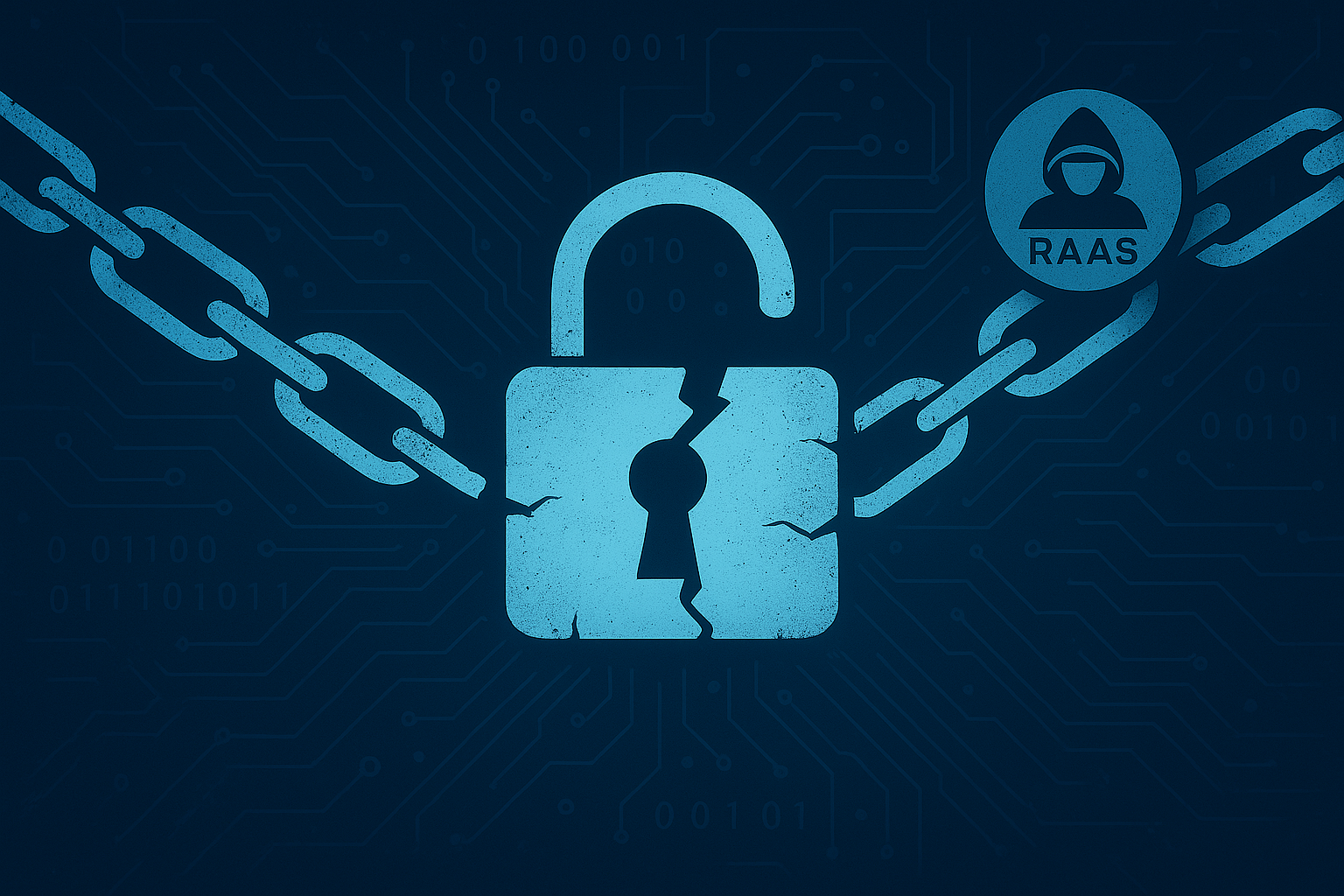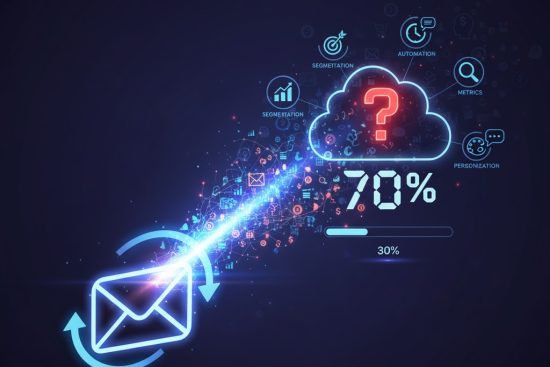
Introduction
Ransomware is one of the most destructive threats in the world of cybersecurity. This type of attack has evolved, and today, the business model behind ransomware attacks is becoming increasingly accessible to criminals through a model known as Ransomware-as-a-Service (RaaS). This model allows even people without technical skills to launch ransomware attacks in a cost-effective manner, making it an even greater threat.
In this article, we will explore what is Ransomware-as-a-Service (RaaS)You will learn how this criminal business model works and what steps you can take to protect yourself from these attacks. You will learn how cybercriminals use this service as a way to make money and how you can prevent yourself from becoming a victim of these destructive attacks.
Table of Contents
What is Ransomware-as-a-Service (RaaS)?
Definition:
The model Ransomware-as-a-Service (RaaS) is a service offered by cybercriminals that allows others, even without technical expertise, to launch ransomware attacks. RaaS "providers" create and distribute the ransomware software, while affiliates use it to infect devices and demand ransom.
How it works:
The RaaS provider provides a toolkit or malware that attackers can customize and use. In return, the provider receives a percentage of the ransom paid, while the attacker keeps most of the money.
Example:
A low-level criminal with no technical skills can subscribe to a RaaS service, customize the ransomware software for their targets, and launch the attack in exchange for a share of the ransom collected.
The business model behind RaaS
Accessibility for all:
What makes RaaS so dangerous is its accessibility. Affiliates don't need technical expertise to carry out the attack. They simply pay a fee or subscription to use the software and start launching ransomware attacks.
Profitability:
For RaaS providers, it is a highly profitable model, as they earn a commission from each ransom paid. Meanwhile, attackers can launch large-scale attacks, which increases the likelihood of financial gain.
Example:
The ransomware REvilone of the most notorious groups using the RaaS model, has generated millions of dollars through attacks on companies and governments.
How are RaaS attacks carried out?
Attack process:
Target selection: Attackers select targets, which can be companies, government institutions or individual users.
Ransomware distribution: Using methods such as phishing or exploits of vulnerabilities, ransomware is distributed through emails, malicious attachments or compromised websites.
File encryption: Once the ransomware is installed, it encrypts the target's important files, making access to them impossible without a decryption key.
Ransom demand: The attacker demands the payment of a ransom (usually in cryptocurrencies) in exchange for the key to unlock the files.
Example:
The attack WannaCry is one of the best known examples of ransomware, which spread rapidly affecting hundreds of thousands of devices worldwide.
RaaS risks for companies.
Economic impact:
RaaS attacks can result in millions of dollars in losses due to operational downtime, data loss and damaged reputation. Companies may be forced to pay the ransom or face worse consequences, such as losing valuable data.Additional costs:
In addition to ransom payments, companies also face recovery costs, legal bonds and compliance costs if sensitive data is compromised.
Example:
Companies such as Honda y Garmin were victims of major ransomware attacks, resulting in significant financial losses and disruption to their operations for weeks.
How to protect yourself from RaaS and other ransomware attacks?
Awareness and training:
Employee education and training is key to preventing employees from falling for phishing tactics. Make sure your employees recognize suspicious emails and do not click on links or attachments from unknown sources.Software update:
Keep all systems and applications up to date to protect against vulnerability exploits that attackers can use.Backup and recovery:
Implement a policy of regular backups and make sure they are isolated from the rest of the network to prevent them from also being encrypted by ransomware.Advanced security tools:
Use antivirus software and next-generation firewalls that can detect and block malicious files before they are installed on your network.
Example:
If you are a small business, use automatic backup solutions and ransomware detection software such as Malwarebytes o Bitdefender.
Emerging Threats and the Convergence of Artificial Intelligence in Cybersecurity
Cybersecurity is constantly evolving, and threats such as Ransomware-as-a-Service (RaaS) are not the only ones we should be concerned about. As the artificial intelligence (AI) is continuing to develop, new types of attacks and vulnerabilities are emerging, including the AI PCs. These AI-based devices present additional risks that companies need to be aware of.
Learn more about the risks of AI PCs and how to protect yourself
This article delves deeper into the emerging risks related to the AI PCswhich could compromise your infrastructure, especially when combined with ransomware attacks.
Case Studies: How companies overcame Ransomware-as-a-Service (RaaS) attacks
In this section, we share stories of companies that faced Ransomware-as-a-Service (RaaS) attacks and how they managed to protect themselves or overcome the threat. These testimonials will allow you to better understand how these attacks work and what measures can be taken to avoid falling victim to them.
Case Study 1: Garmin's recovery from a RaaS attack
"How Garmin avoided a million-dollar meltdown after a ransomware attack."
In 2020, Garmin suffered a ransomware attack that severely impacted its global operations. The attack affected its navigation and fitness services, and although the attackers initially demanded a ransom of millions of dollars, Garmin was able to mitigate the impact through a rapid response and a robust backup strategy.
Actions taken:
Garmin quickly restored their systems from securely stored backups, allowing them to minimize downtime and avoid total data loss.Lessons learned:
Prevention: Maintain a policy of regular and isolated backups.
Quick response: Have a team ready to respond immediately to cybersecurity incidents.
Case Study 2: Honda and the loss of production due to ransomware
"Honda fights back against a RaaS attack that crippled its production."
In 2020, Honda was also the victim of a ransomware attack. This attack affected its infrastructure, paralyzing several production plants and compromising the confidentiality of sensitive data. Although Honda suffered significant financial losses, its ability to restore critical systems from its most recent backups enabled it to reduce the consequences.
Actions taken:
Honda implemented security patches and strengthened its defenses against future attacks, in addition to improving its backup system.Lessons learned:
Proactive security: Keep all systems up to date and apply security patches immediately.
Strengthen internal communication: Interdepartmental coordination was key to responding to the attack.
Are you ready to protect your business against Ransomware-as-a-Service attacks?
With ClickPanda, you can get advanced solutions to strengthen your company's cybersecurity and prevent ransomware attacks.
Conclusion
The business model of Ransomware-as-a-Service (RaaS) has transformed the ransomware threat, allowing even technically inexperienced cybercriminals to launch devastating attacks. With the right education, security tools and recovery policies, you can protect your business from these attacks and reduce the risks associated with them. Don't underestimate the impact of ransomware attacks, and be prepared to defend your infrastructure against this growing threat.








